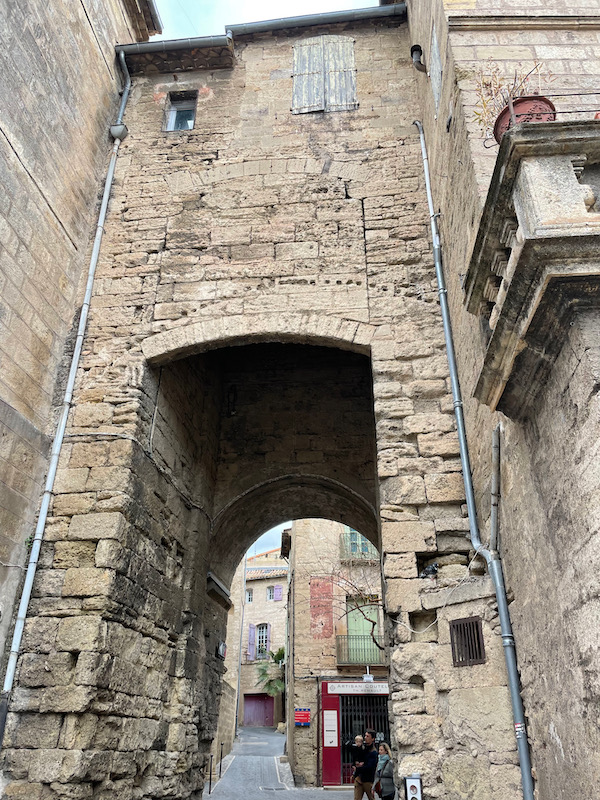Our Blog - Pézenas, France
The oldest occupation of the territory of Pézenas dates back to the 7th century BC. Pliny the Elder (23-79 AD) mentions the town in his writings, talking about the quality of its wool and the whitening properties of the waters of the Peyne River. The Knights Templar had a fortified enclosure here between 1131 and 1140. The golden age was in the 16th and 17th century, when the governors of Languedoc (the Montmorencys) planted themselves here. The family first gained power in 1526 with support of King Francis I. Then Henri de Montmorency built a large chateau with an Italian garden. The family retained power until the early 1600's, when Henri II de Montmorency decided to rebel against Cardinal Richelieu and ordered a representative of King Louis XIII to be arrested in Pézenas. Henri II of Montmorency was beheaded behind closed doors and Cardinal Richelieu had the Château de Pézenas destroyed.
The historical center has lots of really nice houses, and they seem to be in very good shape. They also have nice plaques in multiple languages on many of the historic mansions. This first one is the Hôtel de Peyrat. Just inside the old walls, the building dates from the early 1600's. It has two watchtowers on either side of the entry gate. We couldn't go inside, but the information states that many of the 17th century decorations, like painted ceilings and wood fireplace, are still there.
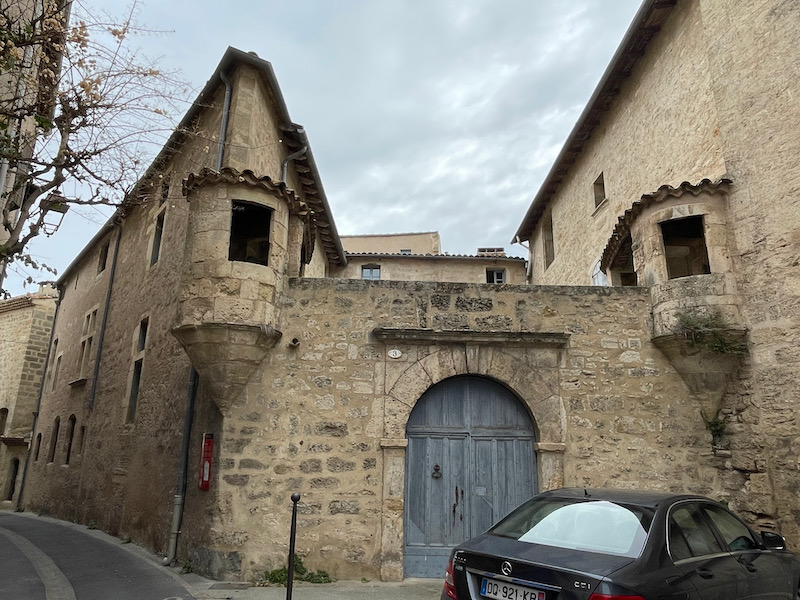
Just up the road is an 18th century earthenware Pieta in a niche on the side of a building.
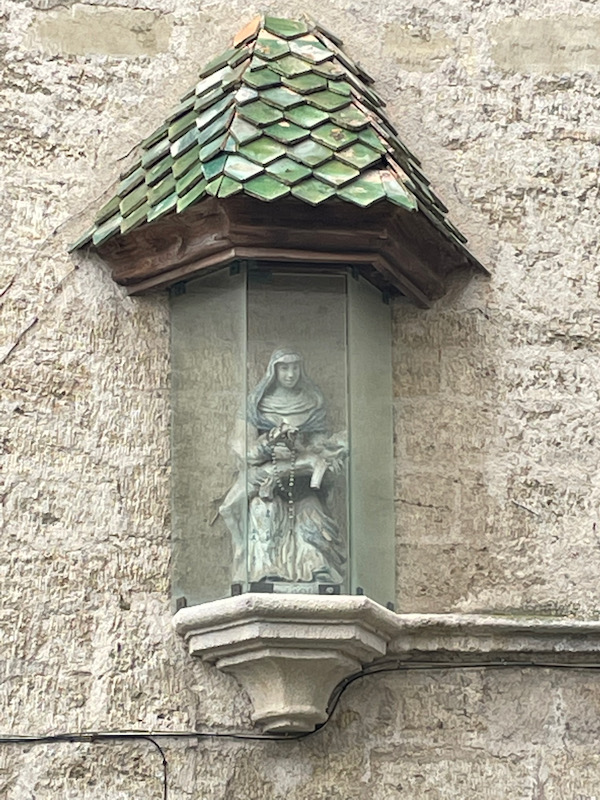
A few random pictures of houses, many of them with mullioned windows. Some of them have interesting shapes, like this first one, with a rounded facade that follows the path of the old alleyway. Some of the houses have been restored, but it is nice that the restoration has kept the nice detail on the doors and windows.
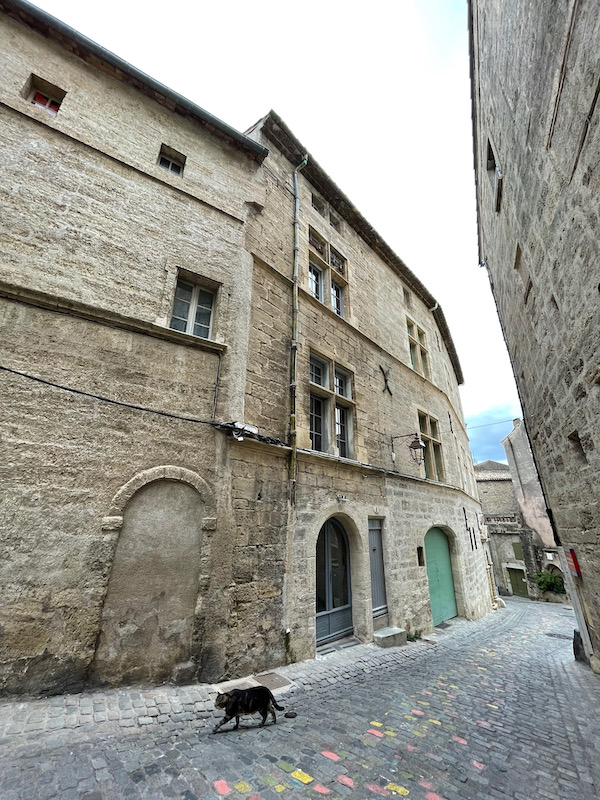
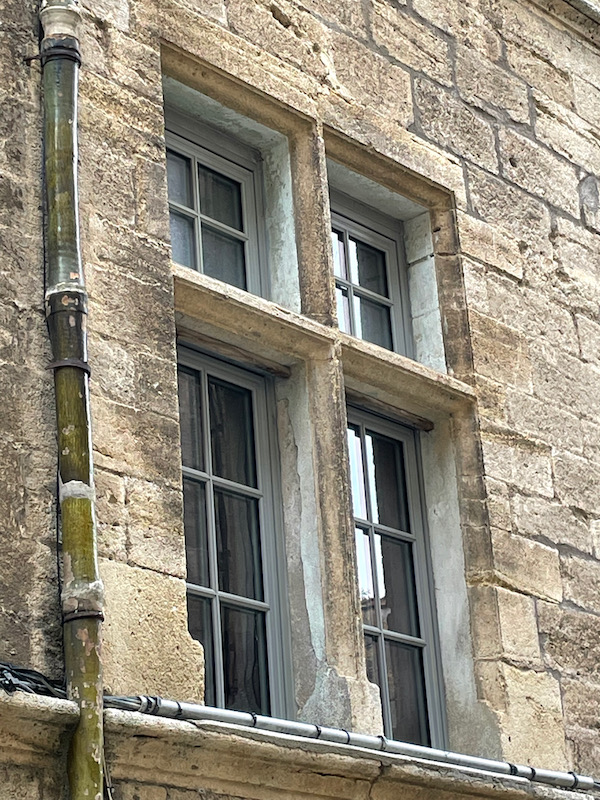
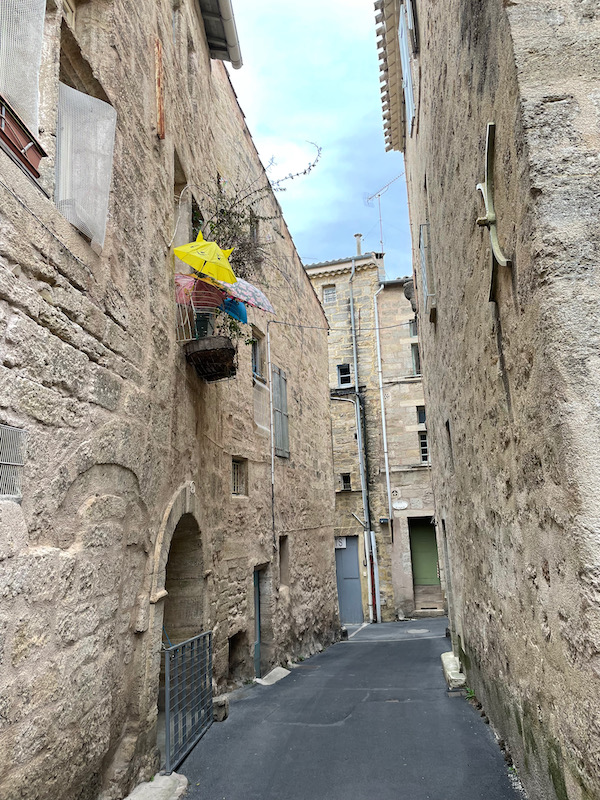
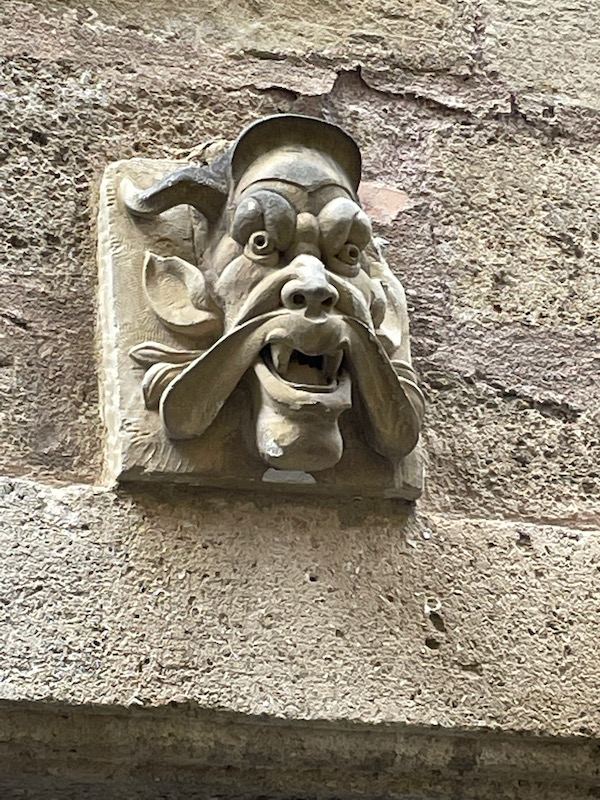
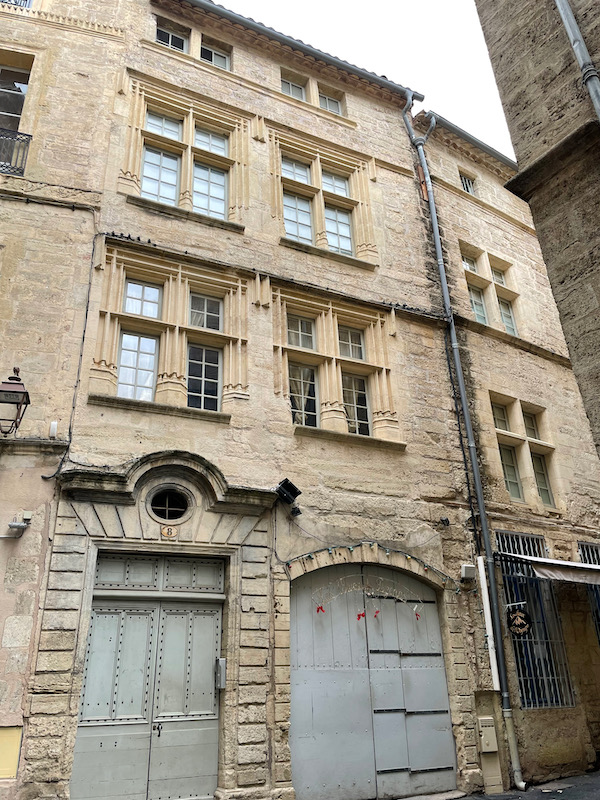
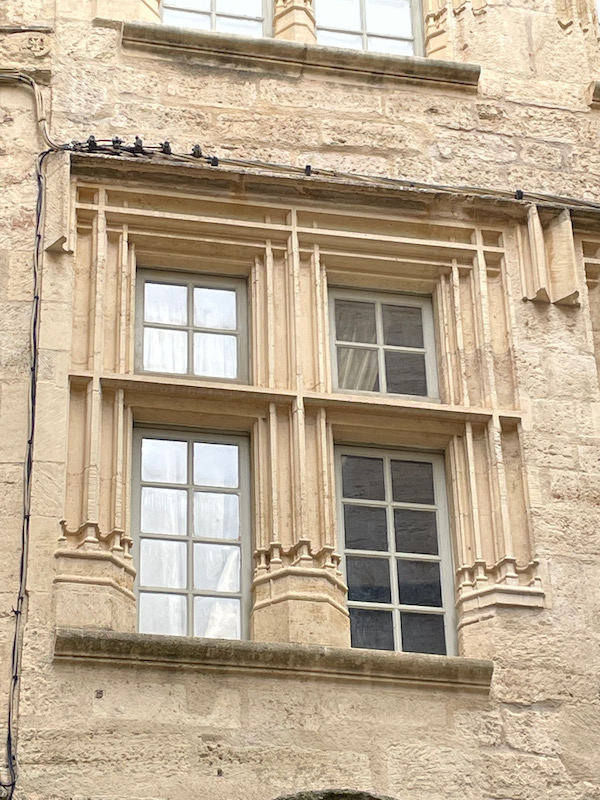
The House of Moulceaux was built on the site of a huge 15th century mansion and the entrance door is from that older mansion. Perhaps in the summer, the doors are opened so that you can go inside to see the 18th century ironwork in the courtyard.
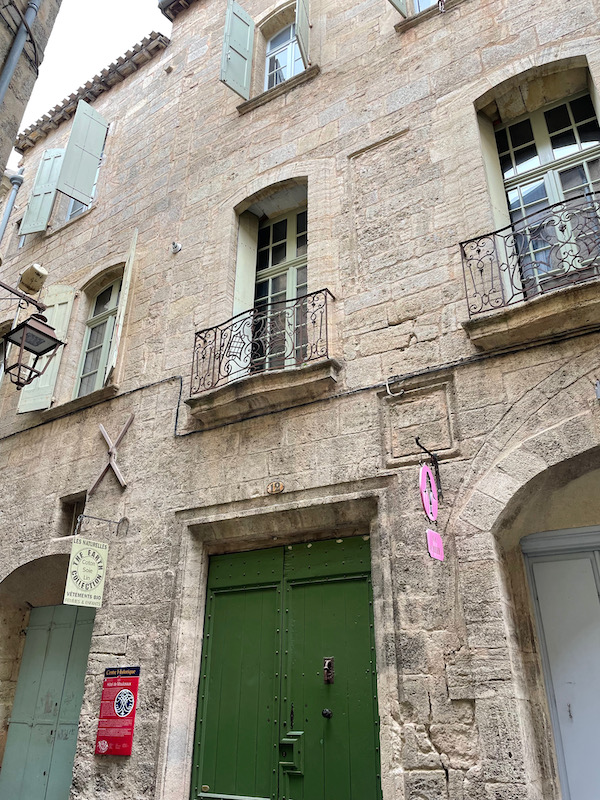
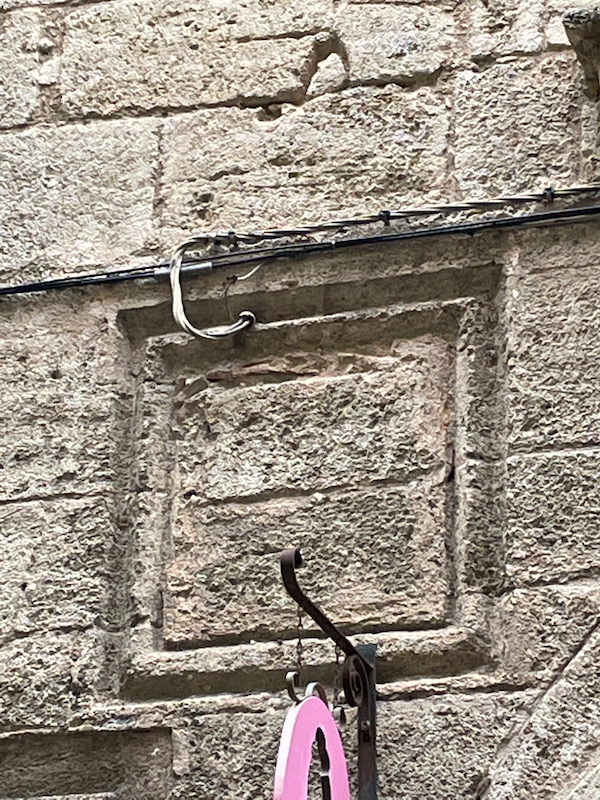
Next door is a home with a Renaissance niche with a statue of Saint Roch, dating from 1511.
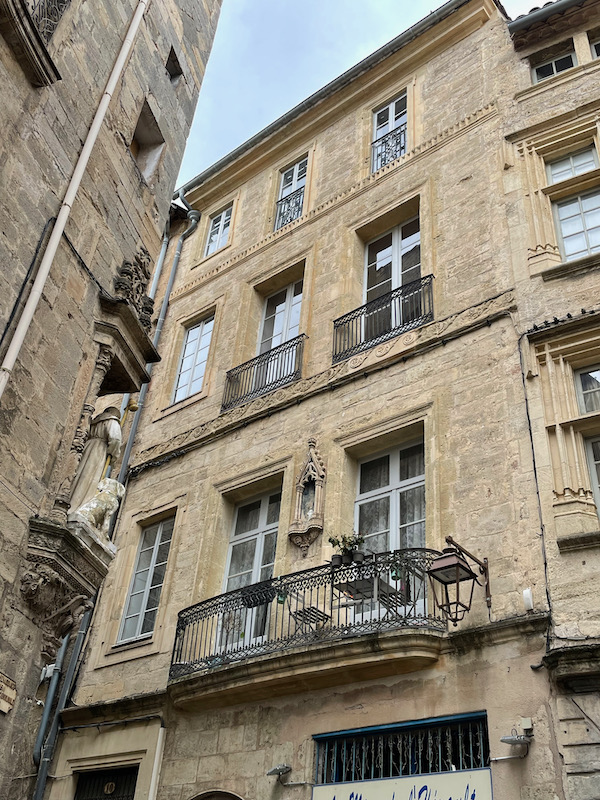
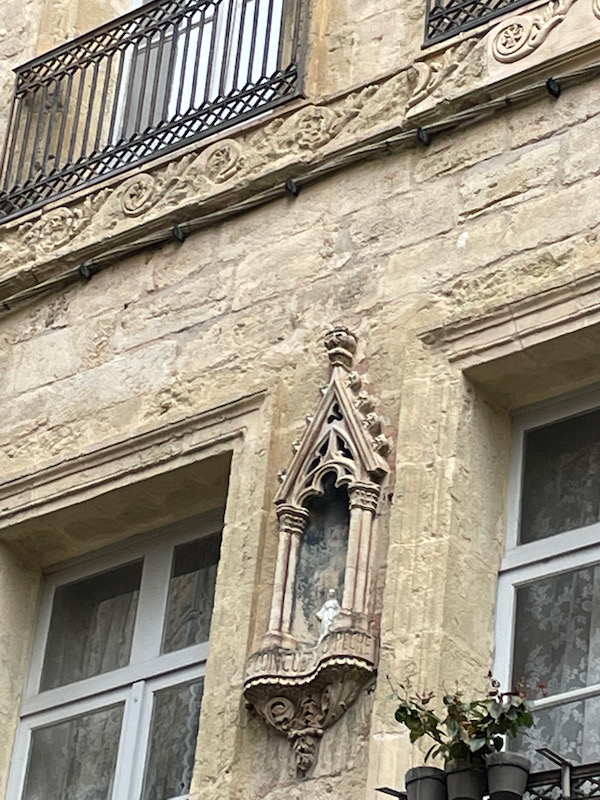
Another niche on the corner, this one a 19th century statue with Saint Roch and a dog.
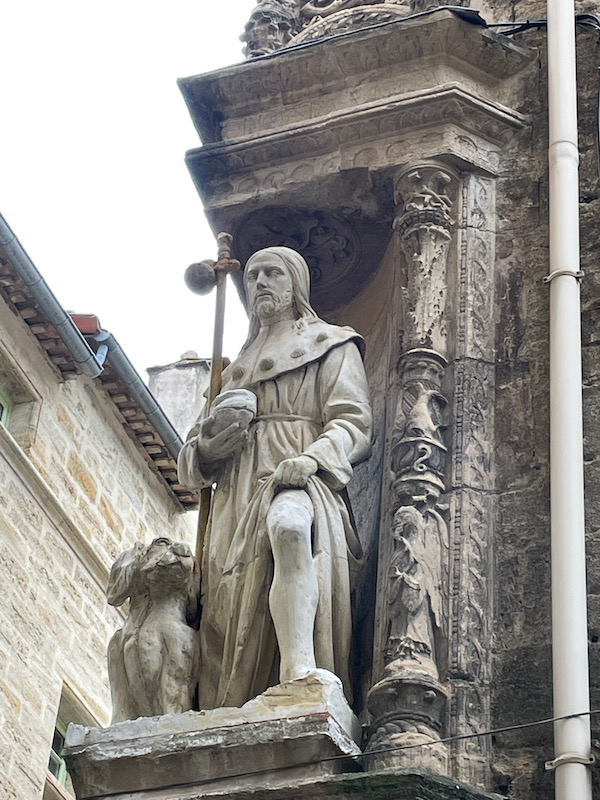
The former Consulaire house dates from the 16th century.
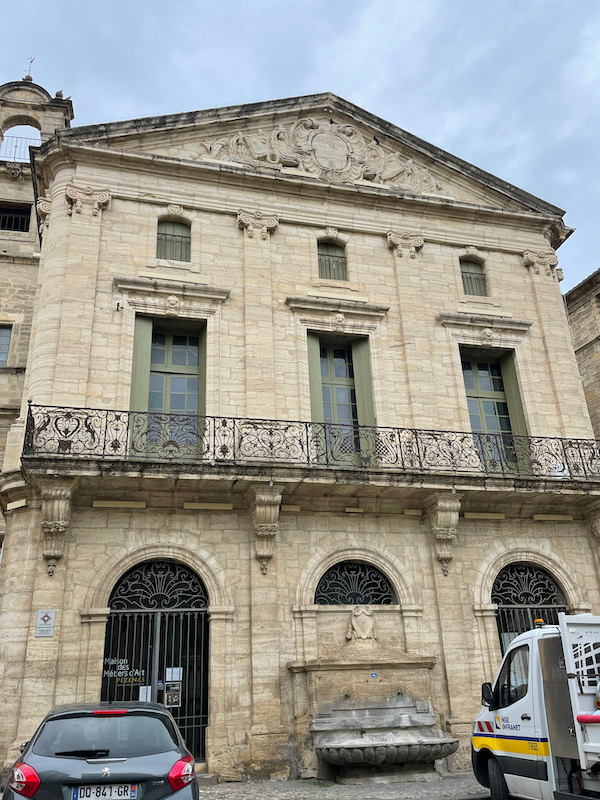
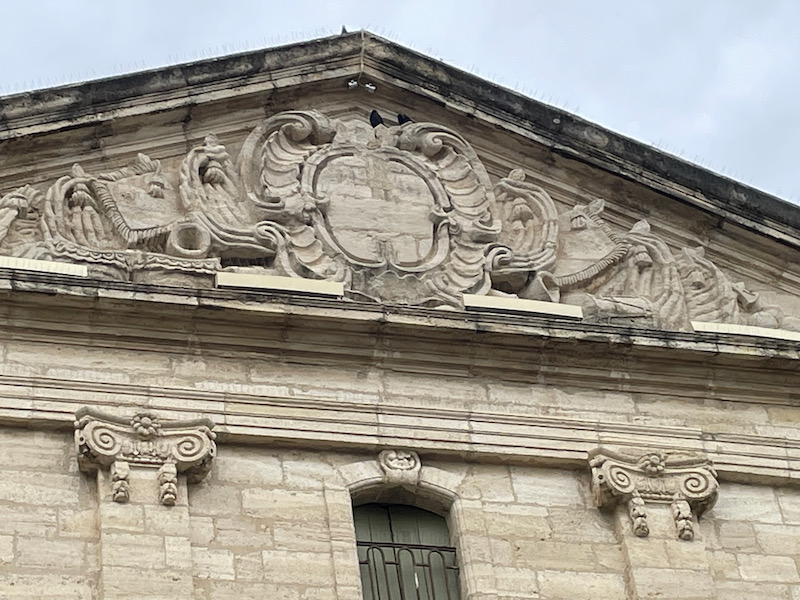
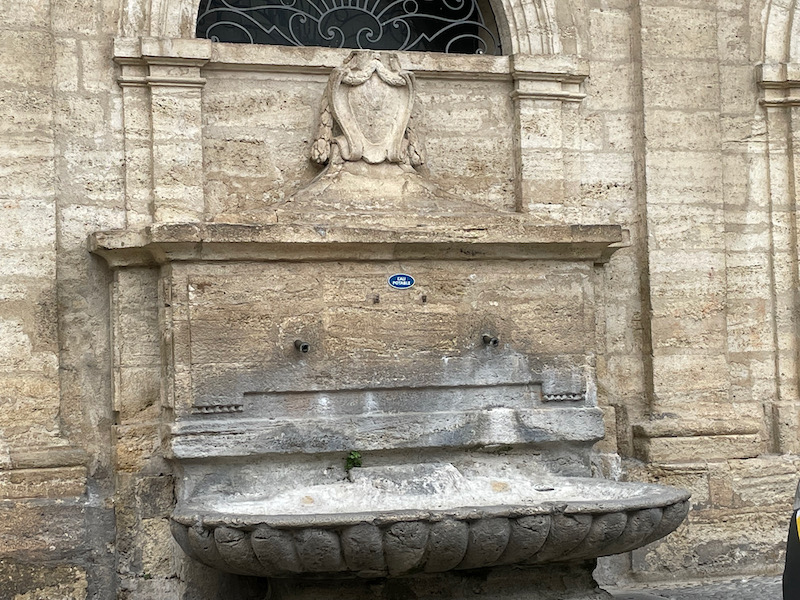
The Hôtel de Lacoste was the property of the Montégut family, who were lords of Lacoste. The house was remodeled between 1509 and 1518. The rib-vaulted staircase in the courtyard was done in 1638, with the date engraved on the keystone. We were lucky enough to go inside and see the courtyard, galleries, and staircase.
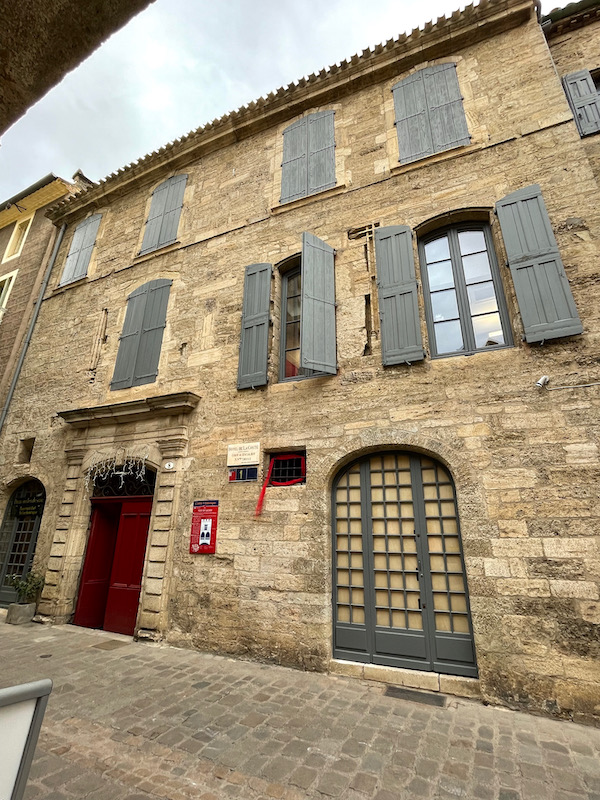
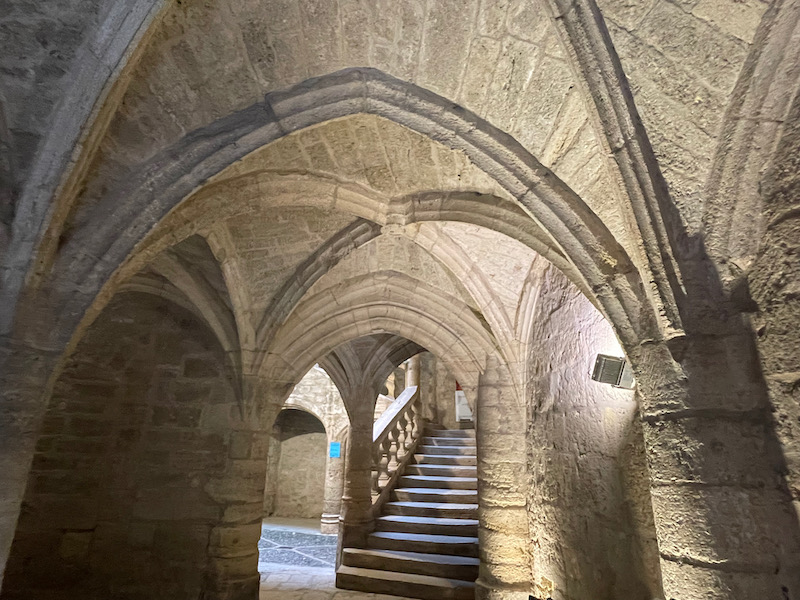
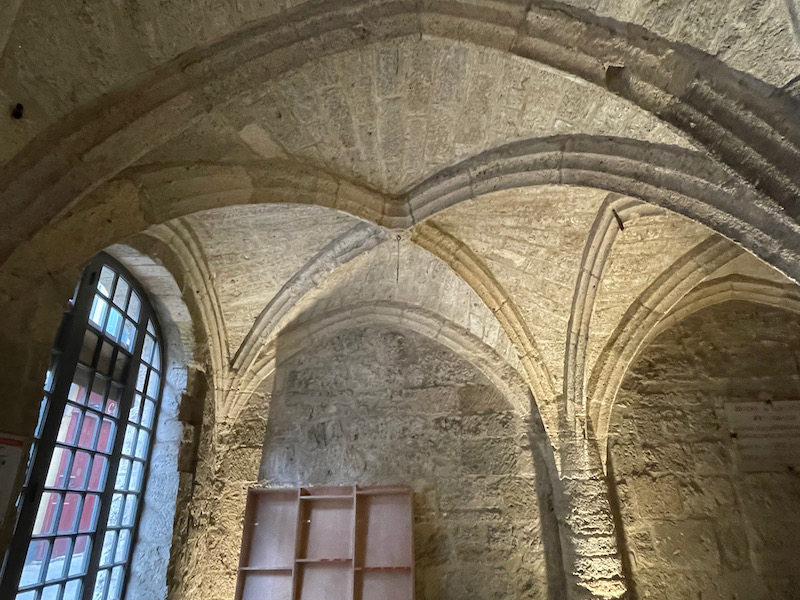
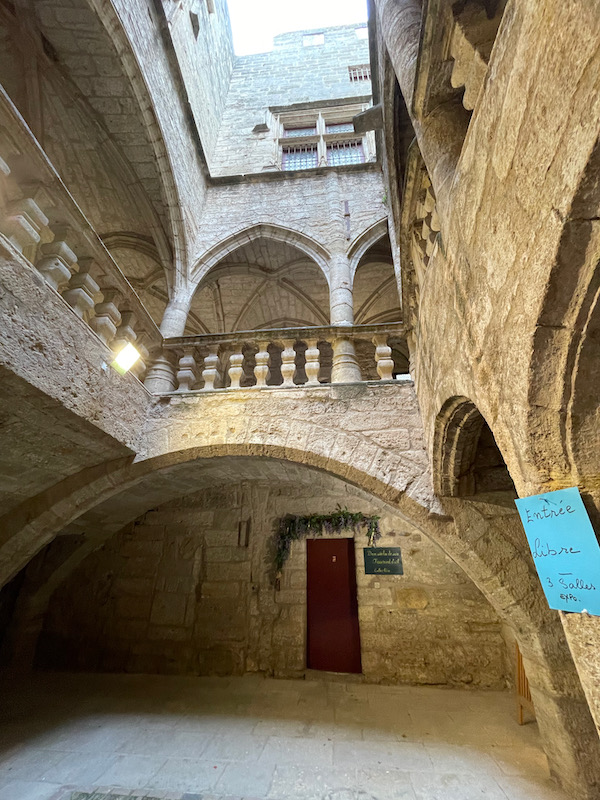
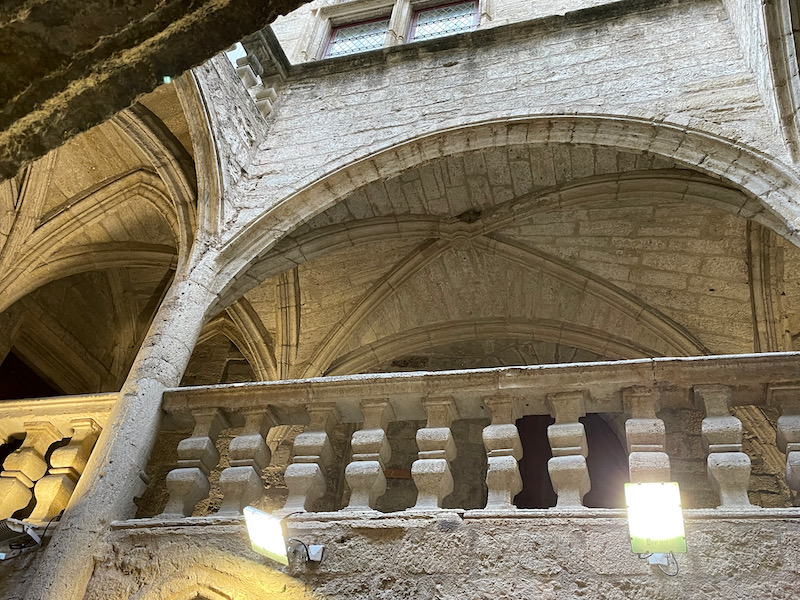

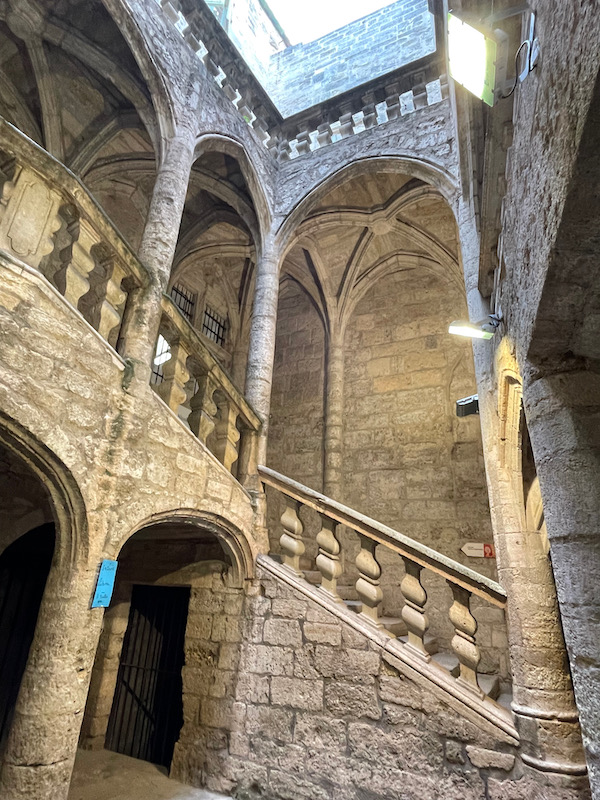
This is the former House of the Knights Templars from the 11th century, and then the former Commanders House in the 16th century.
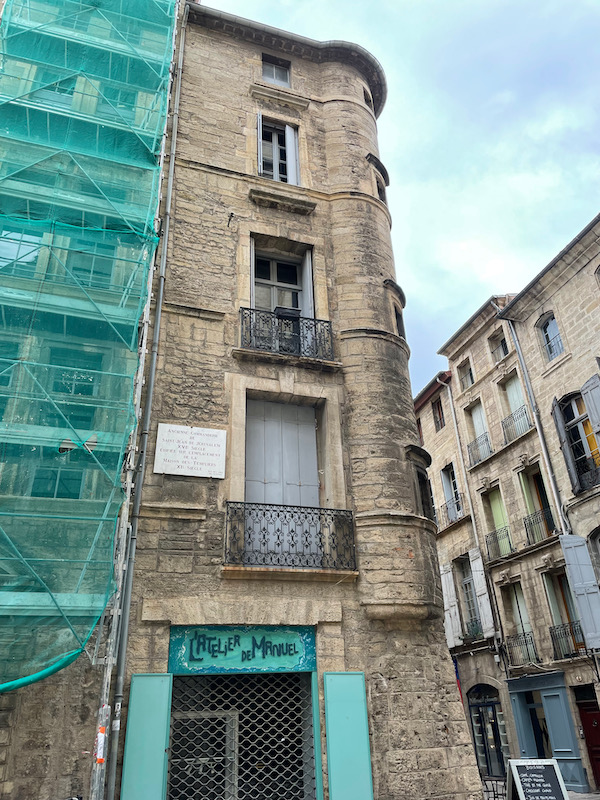
Hotel de Wicque was built in the early 16th century. There are sets of mullioned windows on the facade, and another really nice courtyard with a spiral staircase, ribbed vaults, and galleries on the 2nd floor.
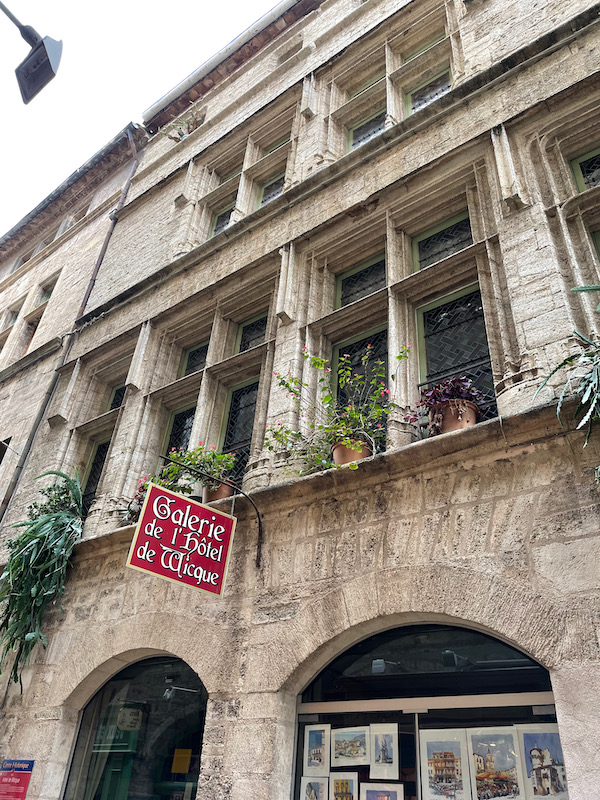
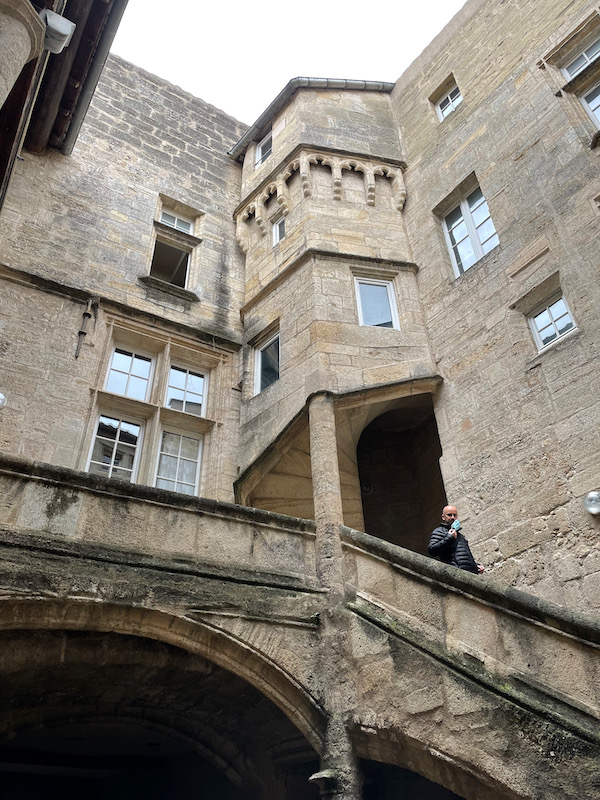
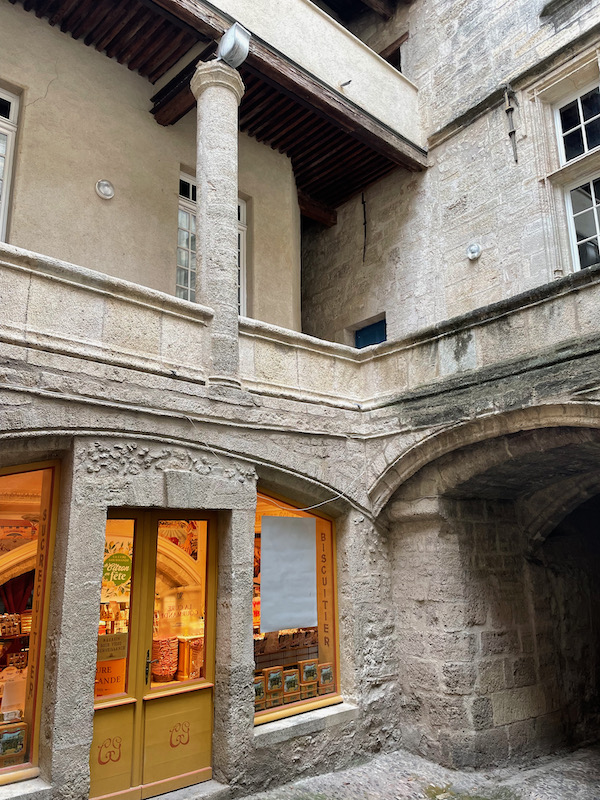
Another medieval street, with vaulted openings for shops on the ground floor, and a arched stone walkway between two buildings.
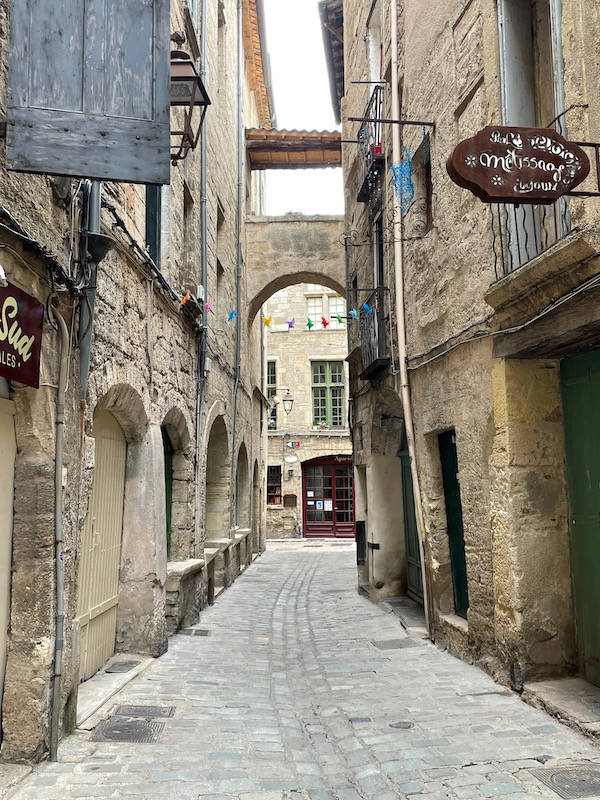
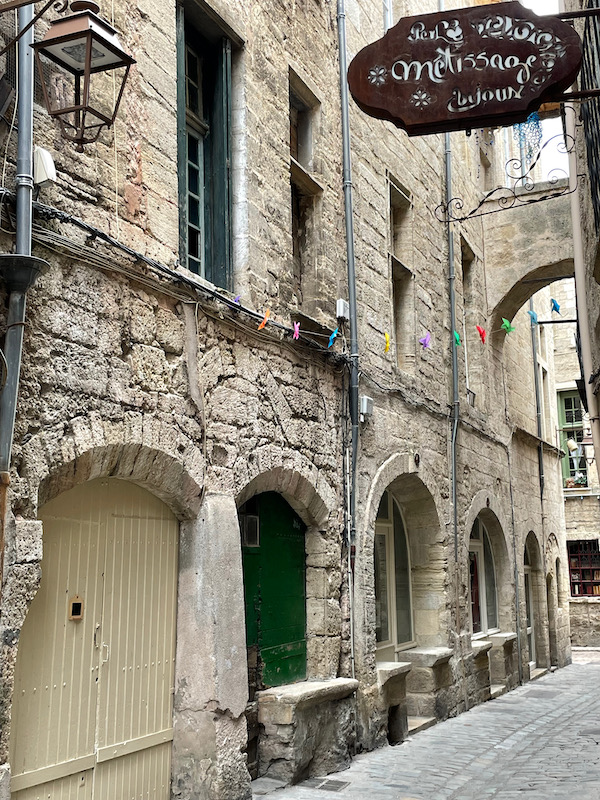
Place de la Republique is the heart of the city center. Here we have a fountain topped with a statue of a woman, brandishing thunderbolts.
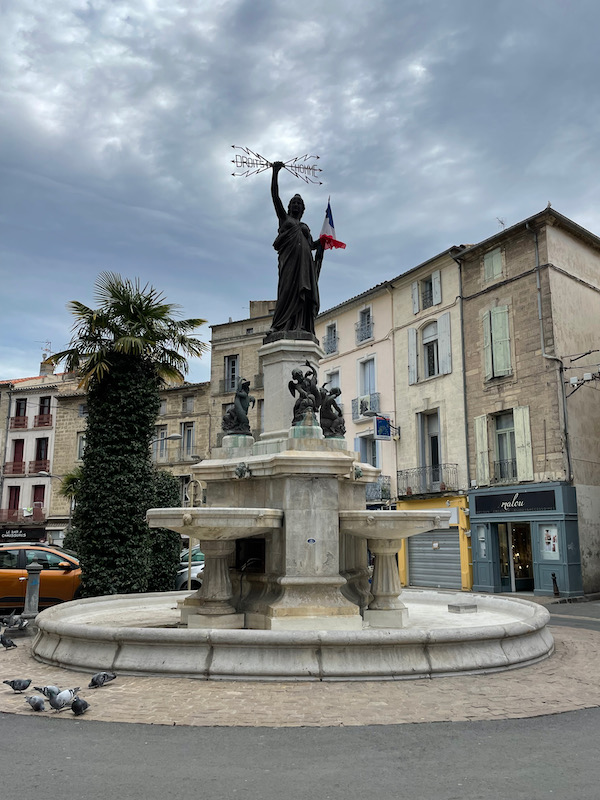
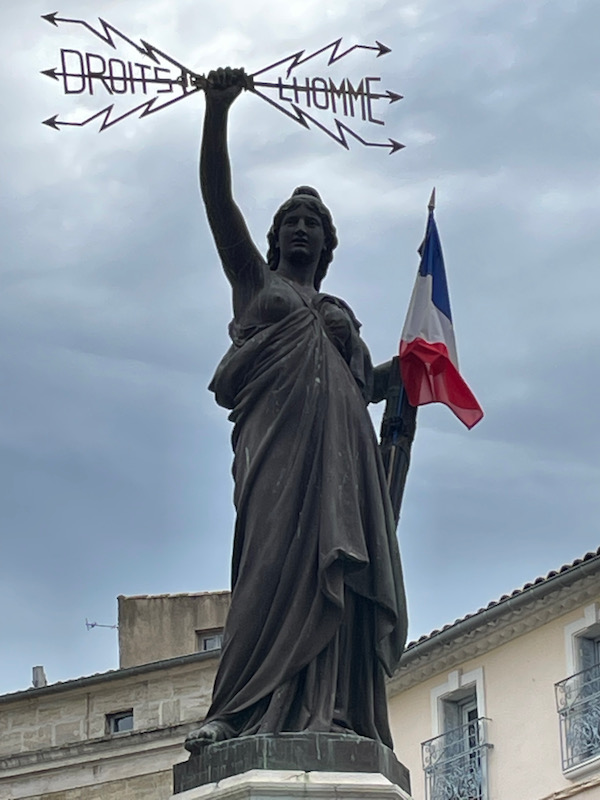
Down the main street from the fountain, Cours Jean Jaurès, there are multiple old mansions from the 17th and 18th century. Some were mansions owned by members of the entourage of Henri II de Montmorency or deputies under the Restoration and July Monarchy. Boby Lapointe spent his childhood here, although you probably don't know who Boby Lapointe is. Robert Jean-François Joseph Pascal Lapointe, better known by his stage name Boby Lapointe, was a French actor and singer who was born and died in Pézenas.
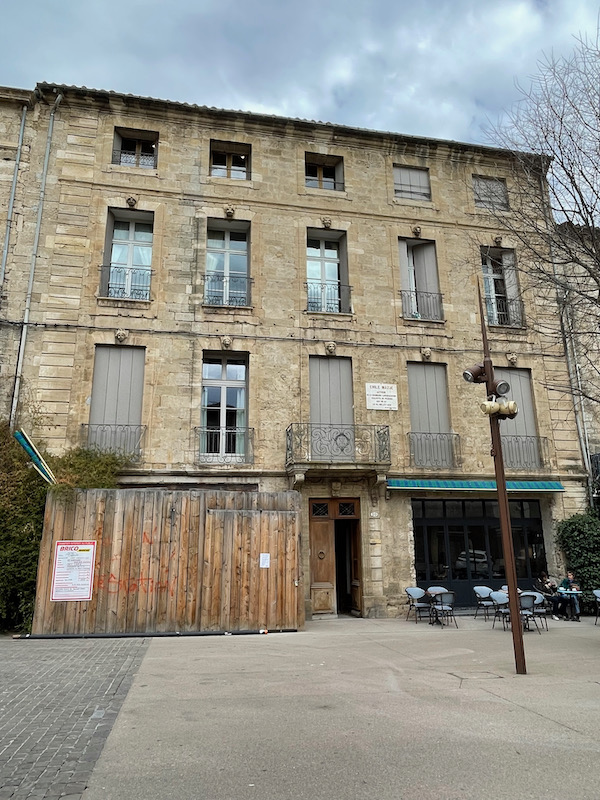
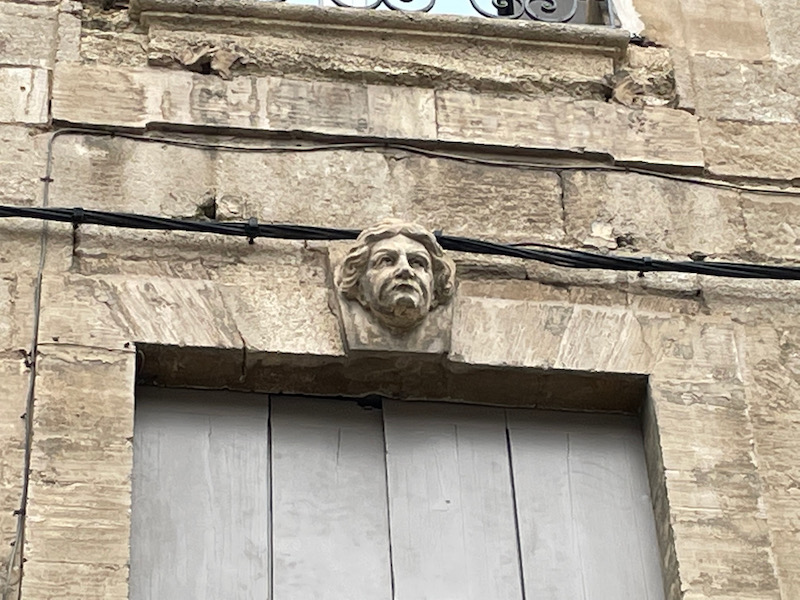
It was around 1298 that a Jewish community started here, with those who came from Spain, Portugal and Italy. The old Jewish quarter is confined to two streets (rue de la Juiverie and rue des Litanies) which remained relatively open to the city. The Jewish community disappeared after 1394, the year of the definitive expulsion of the Jews from the kingdom of France by Charles VI. The Jewish quarter was just inside this gate, the Porte Faugères, which dates all the way back to the 14th century and one of the last remaining vestiges of the medieval wall.
